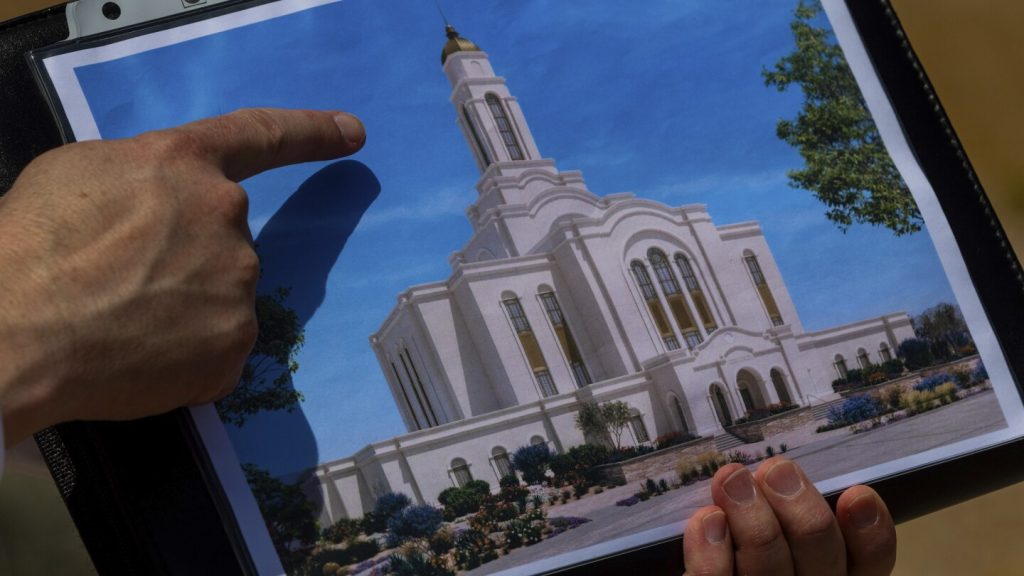In a historic building boom, The Church of Jesus Christ of Latter-day Saints is constructing big, bright temples around the world. However, this expansion is facing resistance in some parts of the U.S., including Las Vegas. Homeowners in a rural foothills neighborhood near Las Vegas are protesting the size and lighting of a temple approved by the city, fearing it will alter their dark-sky environment. Similar objections have been raised in Texas, Wyoming, and Utah, forcing the church to explain the importance of these temples to non-members. The temples are considered sacred spaces for the faithful, where ceremonies like weddings and baptisms are held.
Despite the controversy, church officials maintain that they consult with locals and carefully design temples for each environment. The temples serve as a focal point for the faithful to draw closer to God and participate in sacred rituals. While the church has faced opposition in Las Vegas, they continue to move forward with their construction plans, with a goal of providing more access to these sacred spaces for members worldwide. Temples are separate from meetinghouses, where anyone is welcome, and only devout members following church rules are allowed inside the temples.
The push for temple construction has increased significantly in recent years under the leadership of President Russell M. Nelson, with half of the new temples being built since 2018. The church’s investment arm, which has a substantial portfolio, remains secretive about the exact cost of constructing these elaborate temples. The church’s financial transparency has faced scrutiny in the past, with accusations of obscuring its wealth through shell companies. Despite these financial issues, the church continues to expand its temple-building efforts globally.
In Las Vegas, the approval of a three-story temple with a towering golden steeple has divided the community, with some residents expressing concerns about the size and impact on their surroundings. Neighborhood groups have raised objections to the blocking of views and potential light pollution, noise, and traffic that the temple may bring. Church officials have made modifications to the lighting plan and steeple height in response to these concerns, emphasizing the importance of being good neighbors and fostering connections within the community.
The controversy surrounding temple construction extends beyond Las Vegas, with a potential legal battle looming in a Texas town where plans for a temple were rejected by the town council. The refusal to allow tall steeples has prompted discussions about religious architectural freedom and the federal laws protecting religious institutions from discrimination. Despite the challenges faced in some communities, the church remains committed to its temple-building initiatives, aiming to create sacred spaces that are well-received and foster connections with the surrounding communities.
As the church continues to expand its temple network globally, discussions and debates over temple construction are likely to persist in various regions. The construction of these temples serves as a physical representation of the faith’s beliefs and practices, providing a space for worship, ceremonies, and spiritual growth for its members. While the resistance to temple construction may reflect differing perspectives and concerns within communities, the church remains committed to its mission of building temples that uphold their religious values and serve as beacons of faith and connection.


